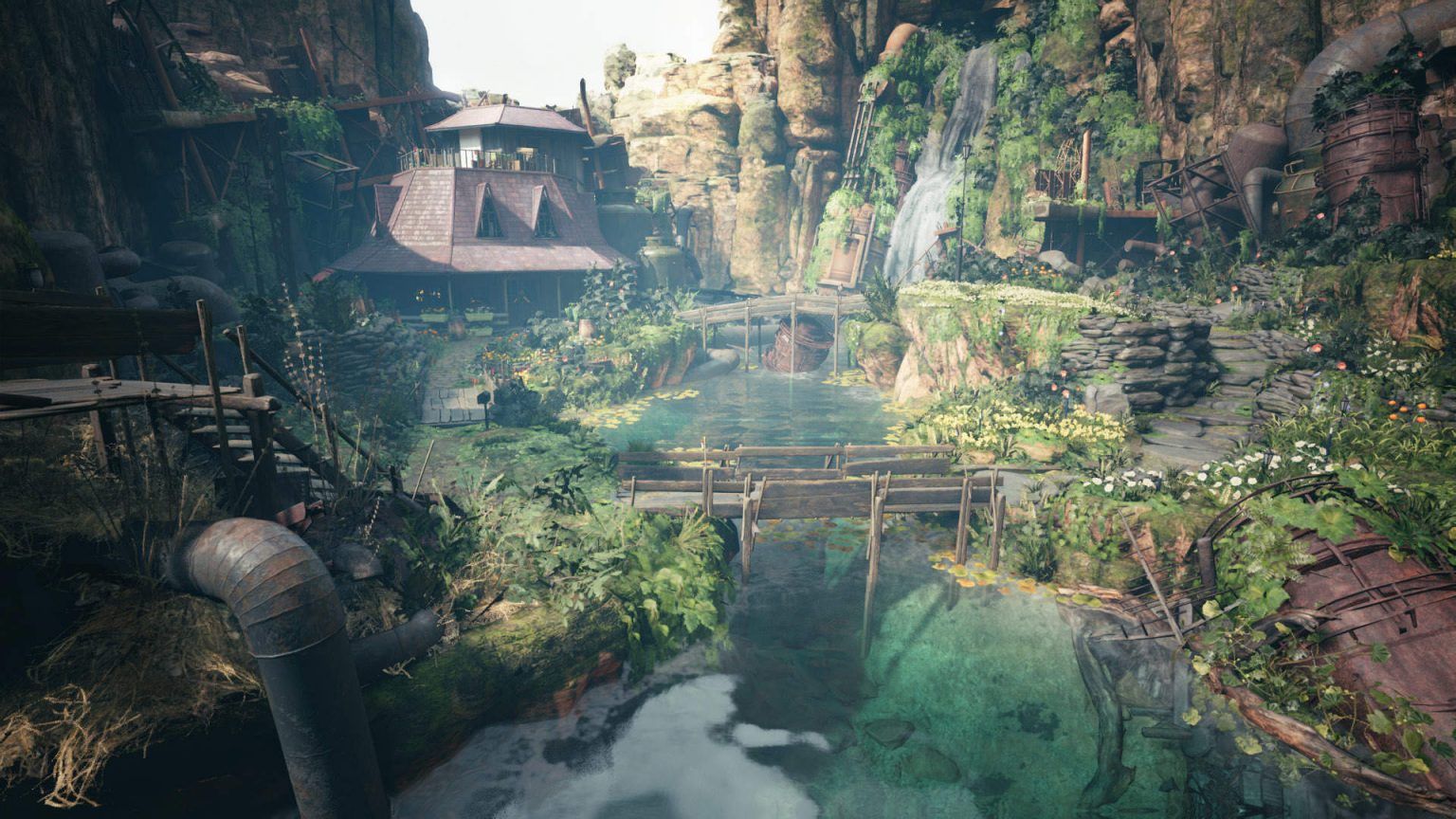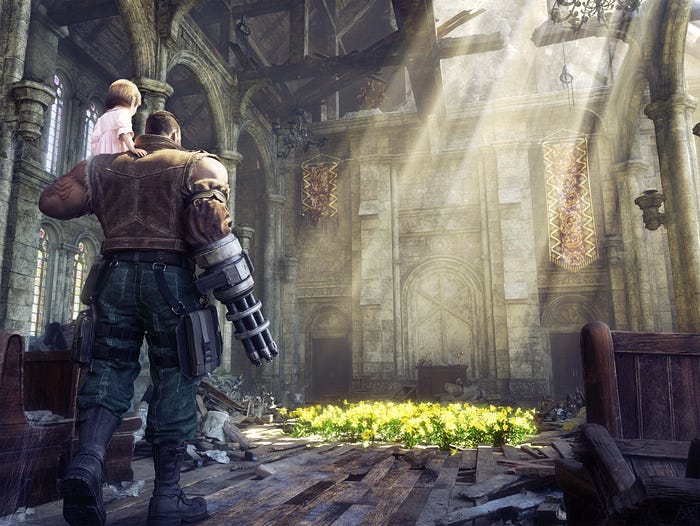Final Fantasy's Green New Deal
FFVII Remake casts a complex shadow over environmental justice

What would you sacrifice to save the planet? It is one of the central considerations in Square Enix’s Final Fantasy VII Remake. And unlike the original game upon which the remake is based, the answer may not be so clear.

Let’s pause for a moment to remember the premise of the original 1997 release. You play as Cloud Strife, a sword-for-hire, recruited by eco-terrorist group AVALANCHE to blow up a mako reactor in the city of Midgar. These massive reactors are built and operated by the malevolent Shinra Electric Power Company, a corporatocracy in charge of the city. AVALANCHE target the reactor because it draws mass quantities of mako energy from the Earth in order to power the giant metropolis — mako energy is the planet’s lifeblood, and AVALANCHE believe that Shinra’s greedy consumption of the precious substance is killing the world. Ultimately this premise acts as a something of a backdrop for the drama involving infamous white-haired villain Sephiroth and his attempt to leverage the Lifestream (essentially rivers of mako flowing within the Earth) to become a god-like being.
The original game leaves players with little doubt that AVALANCHE are the good guys; the freedom fighters. Saving the planet is a noble goal on its own terms. There is the tepid implication, too, that defeating an irredeemable Shinra may weaken its grip on Midgar in general — thus freeing an entire population. The mako reactors themselves are symbols not just of irresponsibility, but of outright corporate evil. Totems of nihilistic greed. Of course they must be destroyed. The planet will be better off, and everyone will live happily ever after. For the most part, Final Fantasy VII adheres to this playbook. Questions are fleetingly raised about AVALANCHE’s tactics, but never their core goals.


Final Fantasy VII Remake invests its 35-ish hour runtime entirely in Midgar, a setting that constituted maybe a third of the original release. Many story elements are shuffled, modified, or entirely replaced in this new version. But it’s the expansive, multi-layered approach to environmentalism that steals the show here. Protecting the planet as its vital essence is phlebotomised by parasitic industrial machinery is still a laudable and uncontroversial goal — that hasn’t changed, and rightly so. But this time around, there’s intentionally more noise than signal. The brutal, often terrifying consequences of AVALANCHE’s actions are laid bare. Shinra employs vast numbers of people who live in homes built by the company; families sit down each night to enjoy meals together in the warmth and light supplied by mako reactors.
Barret — the leader of AVALANCHE and one of the key protagonists — enthusiastically preaches to a disinterested Cloud throughout the first mission. Cloud’s blatant refusal to drink Barret’s kool-aid drives him to anger, almost resulting in a fist fight. After the mako reactor is obliterated, the conspirators escape on a busy city train bound for the Sector 7 slums. On the way there, Barret — driven by the insatiable need to proselytise wherever possible — enters into a war of words with two commuters. In this fascinating scene, two business-attired folks are seated as Barret towers over them, wielding a military-grade minigun prosthetically fused to his arm. These Shinra employees are clearly terrified of the AVALANCHE leader, whose belligerence inflates in line with his voice’s escalating volume. The hapless pair defiantly protest AVALANCHE’s tactics through quivering lips, while defending a “civilised” society underwritten by Shinra. As AVALANCHE’s leader, Barret’s ruthless commitment to ideological purity isn’t surprising. But Square Enix deftly prompts players to consider the net value of this commitment, given its apparent solipsism and absence of empathy. After Cloud has spent more time in Barret’s company, he no doubt channels the emotions of many players, by directly criticising what he sees as an utterly uncompromising black-and-white world view.
Barret — the leader of AVALANCHE and one of the key protagonists — enthusiastically preaches to a disinterested Cloud throughout the first mission. Cloud’s blatant refusal to drink Barret’s kool-aid drives him to anger, almost resulting in a fist fight.
Square Enix threads the needle with remarkable skill by not simply leveraging Cloud as an avatar for the player. Other members of AVALANCHE — folks who, unlike Cloud, have been committed to the cause for some time — struggle with the implications of the group’s actions. Jesse, for example, is the explosives expert who is responsible for designing the devices used to take down the reactors. After escaping the exploding mako reactor — but before boarding the city train — Jesse and her co-conspirators must navigate the Midgar streets on their way to the station. The suburbs surrounding the reactor are awash with fire, debris, and a shellshocked populace. It was a perfect plan: plant a bomb just large enough to take out the reactor without causing any unnecessary damage or casualties. But as the night sky glows eerily from dozens of burning houses, Jesse in particular begins to contemplate her role in what looks, sounds, and feels like a major terror attack. It would be relatively inexpensive for Square Enix to have finished the thought there, leaving us with the open-ended question: do the ends justify the means? But Final Fantasy VII Remake boldly delves deeper. Not only is Jesse haunted by the incident throughout the adventure, she actively takes steps to assess what went wrong, believing (falsely, it turns out) that a design error on her part led to an unintentionally-large blast. These steps are not merely expressed in passing, either: there’s a whole playable mission dedicated to this narrative thread.

It is telling, too, that this mission — with Jesse and the memory of that botched first explosion at its core — subtly and thoughtfully invites us into a Midgar suburb populated by middle-class Shinra workers. It’s a quiet, unassuming place. Neighbourhood cats roam the streets at night. Modest houses are bathed in the familiar cobalt light emitted by mako energy. There are families here. You get the sense that most of these folks are unconcerned with the grand chess game unfolding between AVALANCHE and Shinra; rather, they are simply trying to make the best of it. To earn a living and keep a roof over their heads. How many of these people have to suffer, or have their lives upended, in order to save the planet?
And what of Shinra? Surprisingly, perhaps, the shady mega-corporation turns out to be both strangely enigmatic and laughably pedestrian. Its vast resources are leveraged by its selfish, power-hungry leadership to further their own ends. But this is the thin end of the wedge. One thing that makes the organisation so insidious is how utterly ordinary it is. Although it has a sizeable security force, the vast majority of Shinra’s workers appear to be public servants of one kind or another. For the most part, they are concerned with the never ending task of maintaining crumbling public infrastructure. At one point in the game, Cloud and his team are tasked with deactivating enormous sun lamps that provide synthetic heat and light for the vast slums below Midgar’s suburbs (the protagonists do, in fact, question the ethics of this decision at the time). During this mission, we hear Shinra maintenance workers cynically joking about the terrible state of the superstructure surrounding these sun lamps. Although they are Shinra employees, these are folks with no evil designs; they are trying to make a living in a context of limited choices.

Final Fantasy VII Remake takes the time to carefully expose the intricate societal threads that hold Midgar together. Yes, Shinra is destroying the planet. Yes, AVALANCHE is trying to save the planet. Shinra is also responsible for the entire economic system underpinning Midgar society, keeping people fed, clothed, and housed. Law and order — used as both a carrot and stick — is another key Shinra function. AVALANCHE’s existence, however necessary for longterm planetary survival, also represents an existential threat to both of these systems.
And what of Shinra? Surprisingly, perhaps, the shady mega-corporation turns out to be both strangely enigmatic and laughably pedestrian.
There is a genuine effort here to explore the implications of revolution — at least the kind that AVALANCHE proposes. This expanded narrative feels timely, given the live debates around large-scale economic, political, and social reforms that aim to save the planet from climate change. Final Fantasy VII Remake wisely dispenses with any concern around whether or not the planet should be saved — that is taken as a given. The far more interesting discussion is around how we can get there, considering the wide range of complex, mutually-buttressed pillars upon which existing society stands.
So, let’s return to the opening question: what would you sacrifice to save the planet? That Final Fantasy VII Remake may prompt different answers at the beginning and end of its journey is a notable achievement.
